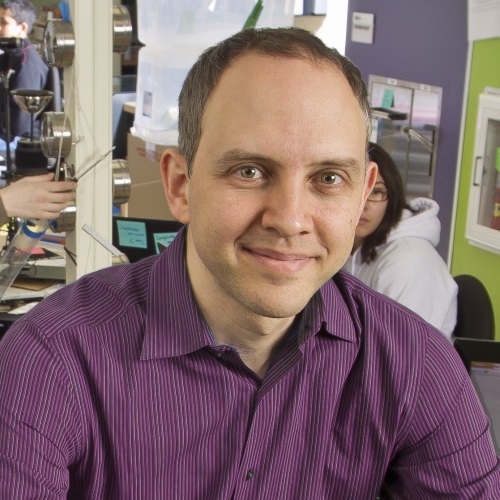Professional scientists constantly develop new tools and epistemologies, because these resources offload cognitive operations that distract them from inquiry and discovery. Modern science and engineering rapidly evolve, but school content is still he same it was 50 years ago–we do not have good mechanisms to keep school content synchronized with professional science and engineering. National curricula are updated every few decades or so, while real science completely transforms itself every 5 or 10 years, and new fields of knowledge appear every other year. Paulo Blikstein’s research program contributes to the bridging effort by creating, empirically validating, and developing theory for new types of STEM education learning environments, content, and curricula. His research agenda focuses on four strands: low-cost technological infrastructure and tools, multimodal learning analytics, student-centered, emancipatory pedagogies, and epistemology.
Research
Low-cost infrastructure and tools
Blikstein’s designed and implemented the first research-based program to bring digital fabrication tools to schools — the FabLearn project (formerly known as the FabLab@School project.) He also designed toolkits to let children engage in advanced engineering activities without prohibitively steep learning curves, and developed many award-winning software and hardware tools: LightUp, an interactive, augmented-reality system for learning about electronics; the GoGo Board, the first low-cost, open–source robotics kit, now used and produced in seven countries; Cloud Labs, a new type of lab that allows students virtual access to their own real biological laboratory; and HapKit, a platform for learning physics through using haptic and force feedback technologies that enables students to program and feel physical forces.
Student-centered pedagogies
Technological tools are useless in the classroom without the correct pedagogy. Blikstein’s is conducting empirical work to determine the best ways to use inquiry and discovery-based technologies in the classroom. A persistent question, for example, is what should come first: hands-on exploration or instruction? Blikstein and his students found that the greatest learning gains for hands-on exploration occur when it precedes formal instruction. The phenomenon was termed the “flipped flipped classroom” to suggest that the popular practice of flipping the classroom is suboptimal. A second part of this strand entailed developing and implementing assessments in large scale studies in schools with makerspaces or fab labs. Blikstein created and validated an instrument to measure maker knowledge, did school-wide surveys with 3,000 students in three countries to assess the labs’ impact, and conducted a randomized control trial in Mexico with over 800 underserved students.
Multimodal Learning Analytics
To assess unstructured tasks such as computer programming and building robots, Blikstein established the first data mining methods for analyzing students’ learning of programming, and co-created and coordinated a research collective in computer science and education, implementing the first ever massive system for the collection and analysis of computer code snapshots. He and his students named this new methodological field “Multimodal Learning Analytics” (MMLA), which brought multimodal data to learning analytics through gesture trackers, eye trackers, skin conductivity sensors, video, audio, and sketching data.
Epistemology
This fourth research emphasis consists in in-depth exploration of advanced epistemologies and knowledge encoding in science, through in-depth ethnographic research work. For example, in the context of makerspaces, one of the research projects tried to identify how students reason while building and making engineering projects. The research has identified four categories of reasoning strategies by looking at the origin of students’ ideas: unexplained insight, materials-based, example-based, and principle-based. The data showed that principle-based reasoning was most productive and led to better products. In a follow-up study, Blikstein concluded that productive prompting through a relatively quick intervention led students to use engineering principles in place of the other three categories. Within his Bifocal Modeling project, where students are led to design computer models and compare their simulated results with real sensor data side-by-side and in real time, he investigated innovative approaches to science teaching in maker environments. For example, in a study in which two types of interactive lab systems were compared (with and without real time model/data comparison,) students who participated in the bifocal group performed better, and perceived their lab work as more similar to how real scientists work.
